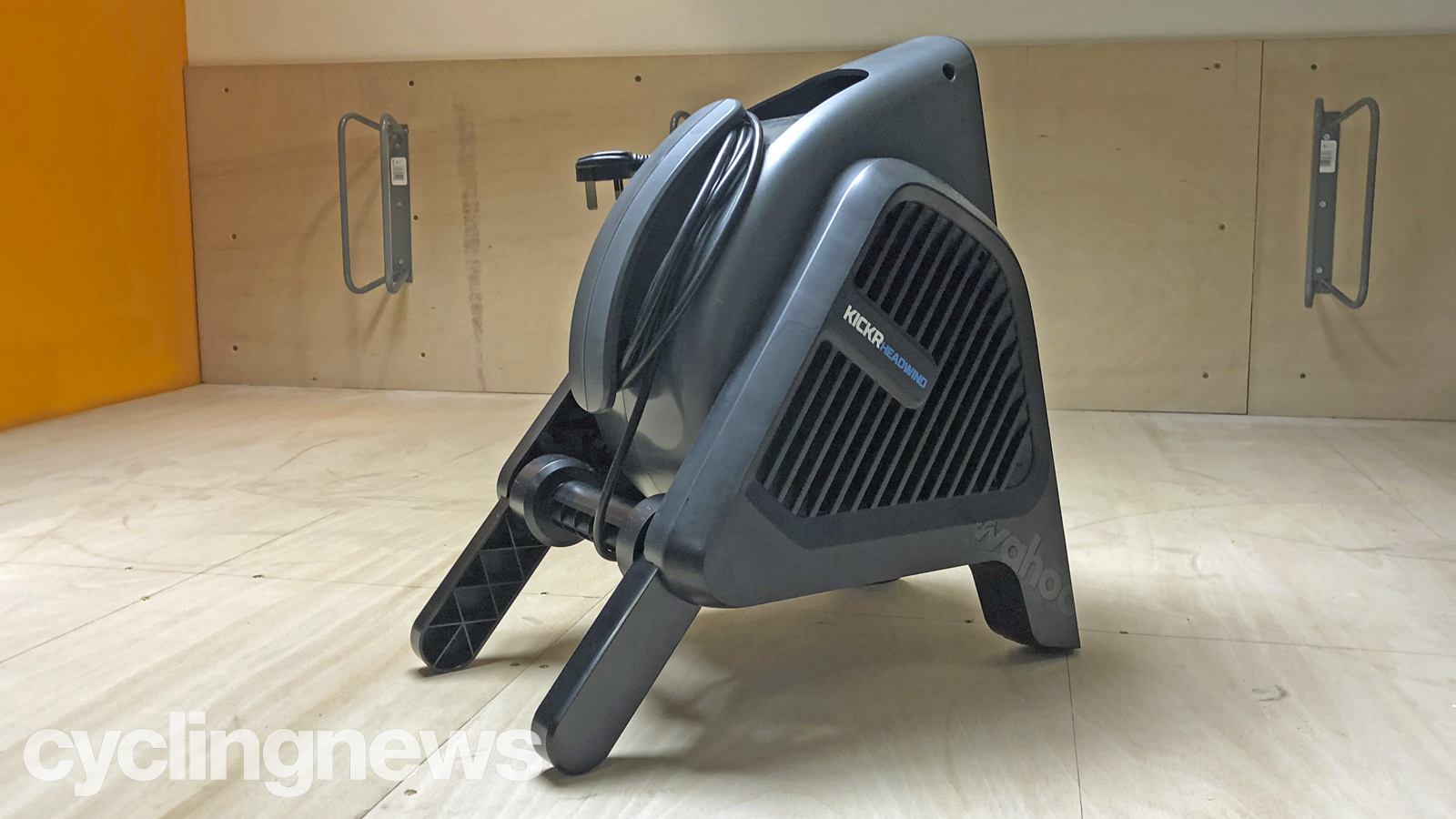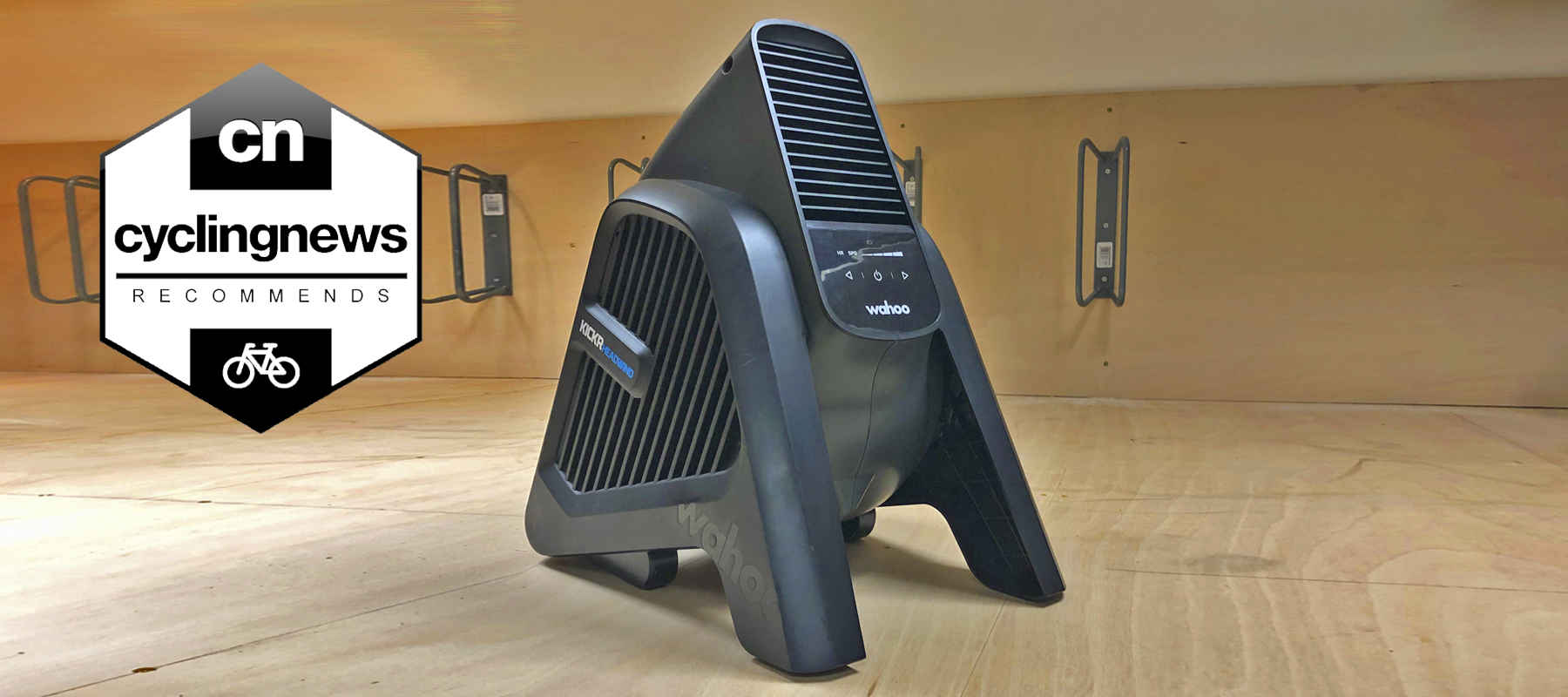Cyclingnews Verdict
Wahoo's Kickr Headwind is a smart fan that pairs with your heart rate and your turbo trainer to tailor its output based on your effort, but there are a few small things we'd change
Pros
- +
Adjusts output based on heart rate, speed, or manual input
- +
Output zones can be adjusted to preference
- +
Interfaces neatly with Kickr Desk
- +
Multiple workout profiles available for tailored output
Cons
- -
Narrow airflow
- -
Airflow can be adjusted down, but not up
You can trust Cyclingnews
The Kickr Headwind was the cause of much discussion at its release, with many baulking at the price for what is, essentially, a fan. However, Wahoo has worked a number of features into the Headwind that you'll come to appreciate.
Features
The Headwind is a smart fan that adjusts its output based on a choice of factors. You can either control the fan speed manually using the Wahoo app, pair the Headwind with your turbo trainer to adjust automatically based on virtual speed, or pair it with your heart rate monitor to tailor the output to your heart rate.
I've tried all three, and output based on heart rate seems to make the most sense, as your heart rate is most likely to align with your body's temperature. Speed data would, of course, be a more realistic experience offering a greater 'headwind' as speed increases, but I'm happy to forego a bit of realism in favour of some extra airflow when pushing 190bpm on a steep, slow climb.
Output in line with speed might work well for longer time-trial efforts, but less so for Zwift races or TrainerRoad sprint intervals. I quickly learned that keeled over the bike gasping for air after a sprint is not the optimal point for a fan to shut off.
The fan doesn't need to be switched on. Once a compatible heart rate monitor is picked up by the fan, the last-known settings decided within the app are used and the fan wakes itself up.
One handy feature of the app is that the heart rate or speed at which output increases can be adjusted on a sliding scale, so you can get maximum output at 120bpm or 180bpm, depending on your preferences and heart rate behaviours. It takes a bit of fine-tuning to get it at your preferred level, but, once there, it makes for a considerably more enjoyable experience.
Wahoo claims the maximum fan speed is 48kph (30mph). I've no reason to doubt this claim, and with the focused airflow, it shifts more than enough air to keep you cool, even at the highest of effort levels. Said airflow focus does help in this regard, but it's narrow enough that the wind can be hitting your legs without your body, or vice versa.
Design

The approximate weight of the Kickr Headwind is 5kg, which makes for a stable, yet portable unit. An inbuilt handle simplifies transport further still, and the power cord wraps around a guide at the back. There's also no separate power brick to carry around, unlike the Kickr turbo trainer and Kickr Climb.
On the base, the rear sees two adjustable legs that fold, lowering the direction of airflow should you want to place the headwind on a desk or table in front of you. Personally, I wish there were two legs at the front as well, which would raise the direction of airflow. To get the airflow to point at the body – rather than the legs – the Headwind needs to be positioned approximately 150cm from the front of the bike. This isn't too much of an issue, but for those with small apartments, this can limit where your pain cave can be set up.
The front of the Headwind sees a small touchscreen control panel, which features a simple on/off switch, LED indicator lights, and two manual buttons to increase/decrease the fan's output based on four incremental levels.
Verdict
Whether it's worth the £199.99 / US$249.99 / AU$399.95 / €229.99 is likely to be a decision based on personal circumstances. There's no question it's a luxury addition to your indoor ride, but in winter, where you're more likely to be using it, starting an indoor session with a fan turned up to 11 is uncomfortably cold, and we've all experienced underwhelmingly weak airflow. The Kickr Headwind makes deciding between too cold now or too hot later a thing of the past, and in the largely unpleasant world of indoor cycling, that small improvement is well received.

Josh is Associate Editor of Cyclingnews – leading our content on the best bikes, kit and the latest breaking tech stories from the pro peloton. He has been with us since the summer of 2019 and throughout that time he's covered everything from buyer's guides and deals to the latest tech news and reviews.
On the bike, Josh has been riding and racing for over 15 years. He started out racing cross country in his teens back when 26-inch wheels and triple chainsets were still mainstream, but he found favour in road racing in his early 20s, racing at a local and national level for Somerset-based Team Tor 2000. These days he rides indoors for convenience and fitness, and outdoors for fun on road, gravel, 'cross and cross-country bikes, the latter usually with his two dogs in tow.
